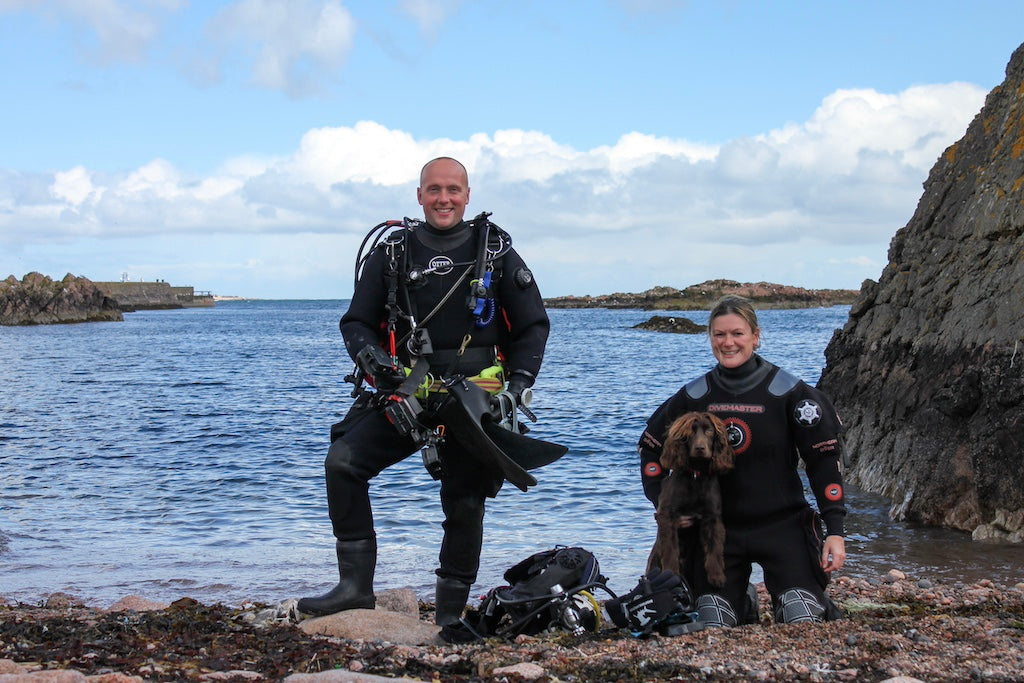Beneath the surface of Scotland’s rugged coastal waters lives a creature of astonishing size and mystery — the flapper skate. Once thought to be a single species known as the “common skate,” recent science has revealed not one, but two distinct species — both critically endangered. In this interview, marine biologist and founders of Shark & Skate Scotland, Dr. Lauren Smith and Chris Rickard, share the vital work being done to protect these ancient, misunderstood animals. From groundbreaking citizen science to unforgettable underwater encounters, the pair offer a fascinating glimpse into the fight to save one of Scotland’s largest creatures.
What is Shark & Skate Scotland?
Shark & Skate Scotland is a research and conservation organisation founded by Chris Rickard and Dr Lauren Smith with the aim to obtain important citizen science data about the various elasmobranchs (shark, skate and ray) species found in Scottish waters. Sightings of juveniles and adults (both alive and deceased), egg cases and behavioural observations are of great value. Citizen or Community Science such as this can be fundamental in furthering our understanding of this vital group of fish. The more we can understand about their biology, behaviour and habitats, the more effective our conservation and management can be.
What is a skate? Is it different to a ray?
Skates and rays are closely related; they are both cartilaginous fish and “elasmobranchs”. They are bottom-dwelling species with flattened bodies and enlarged pectoral fins that merge into the head – essentially flattened sharks! However, there are some key differences between skate and ray species. The tail shape provides one of the best physical clues; a skate’s tail is thicker/stockier with small dorsal fins towards the end of the tail, whereas a ray’s tail is usually thin and whip like, with some species having venomous stinging spines. Another key difference between skates and rays is that Skates are “oviparous”, meaning they lay egg cases, often called mermaids purses, whereas rays are “viviparous” and give birth to live young. There are occasional reports of the common stingray in Scottish waters but otherwise all other species of ‘ray’ that we have are in fact skates (despite the confusing common names e.g.: Thornback ray is a skate)!

What species of skate are you primarily studying in this region, and are they unique to our Scottish Coastline?
The flapper skate (Dipturus intermedius) is our focal species. Previously known as the ‘common skate’, it was discovered in 2010 that the term ‘common skate’ had been used to describe two different species; the flapper skate and the smaller blue skate. Both skate species are currently listed as Critically Endangered by the IUCN, having been described as extinct across large parts of their former range because of overfishing.
Flapper skate are found in the northern North Sea and around Scotland’s northwest coastline. Prior to over exploitation they were widespread across the Northeast Atlantic and found off Iceland and Norway. However, since 2009 it has been illegal for commercial vessels to target flapper skate. Recent work suggests there are signs of localised recovery, likely due in part to this ban, as well as recent steps towards protecting their breeding habitat.
Flapper skate take more than 10 years to reach maturity. They produce low numbers of offspring by laying egg cases on the seabed in relatively shallow waters and the embryo within the egg case takes 18 months to develop and hatch out. The eggs are sensitive to activities which disturb the seabed, for example, anchors, mooring chains, and mobile fishing gear such as bottom trawls and dredges. Therefore, it is important to ensure that appropriate protection is put in place. A recent example of this is the Red Rocks and Longay MPA, which received an urgent MPA designation in 2021 and a permanent designation in 2023 with extended boundaries. This came about thanks to a collaborative effort initiated by Shark & Skate Scotland with local scallop divers, non-profit organisations, Nature Scot and the Marine Directorate.

How does the skate population interact with other marine species in the ecosystem?
There is still remarkably little known about the flapper skate. However, from what we know, the species is both predator and prey (despite the fact that it is the largest skate in the world, reaching just under 3m from nose tip to tail tip and about 2.3m from wingtip to wingtip)! Necropsies performed on dead animals washed ashore have revealed clues as to their diet (an assortment of crustaceans and small fish species). Interestingly, we have seen recorded footage of adult skates being predated on by adult grey seals!
Have you had any memorable encounters with these animals?
Yes! Lauren’s initial encounter was unfortunately with a dead adult that washed ashore on the West coast, she performed a necropsy in-situ and collected samples for research. Thankfully a few years later Lauren had her first interaction with a live flapper skate in Loch Sween. It was incredible! Unfortunately, due to the very dark and silty conditions, it was a little tricky to fully appreciate! However, a “third time lucky” encounter happened in June 2023 at a local dive site at Macduff, when Lauren and Chris were diving an area they had dived hundreds of times before and incredibly came across an enormous female resting on the seabed. The visibility was unusually good and it was a phenomenal encounter not to be forgotten!
Chris has had some incredible encounters too. His first was in September 2019, whilst diving in the Summer Isles, northwest of Ullapool. The dive had been organised as a Seasearch dive (gathering habitat and species data from divers across the UK) to survey a known maerl bed in the channel. After the maerl survey part of the dive had been completed, Chris drifted across the gorgeous pink seabed (maerl is a kind of calciferous algae and is a beautiful bright pink!) and looking up from taking pictures of a wrinkled swimming crab, was shocked to see an eye the size of a tennis ball looking straight back at him! It turned out to belong to a fully grown female flapper skate approximately 2.5m in length and 2m across. He spent the next few minutes with her, snapped a few pics and video clips and then she gently swam away. Chris literally whooped when he returned to the surface!

If there was one message you could share about skates and their importance, what would it be?
These animals are often overlooked for more charismatic cetaceans, or animals from warmer climes such as turtles and tropical reef fish. Time and time again, science has shown how important these apex predators are in keeping life-cycles and food chains healthy and in balance. Removing an apex species such as the flapper skate can have huge repercussions across a huge range of other species. More than this, they are just awesome creatures in their own right. Try measuring out 2.8m by 2.3m and imagine an animal that size gracefully gliding past you on a dive…awesome!!

How can local communities, fishers, and the public help protect skate populations?
Report any sightings you may have. Recreational anglers should follow best practice guidelines e.g. a sling to support the animals whilst dehooking, measuring or weighing. This reduces the stress on the animal and makes it logistically easier to release the fish back into the water post capture. Again, the more data we have about their biology, behaviour and habitats, the more effective our conservation and management can be. And lastly, tell your friends and family about them! The more people that know about these magnificent animals, the more data can be collected and the more likely that appropriate protective measures can be put in place to ensure their survival. Their lives are in your hands!
Find out more
The flapper skate is a keystone species, vital to the health and balance of underwater ecosystems. Thanks to the dedication of organisations like Shark & Skate Scotland, and the involvement of citizen scientists, divers, and fishers, these magnificent animals have a chance of recovery. As Dr. Lauren Smith reminds us, their future depends on greater awareness, better protection, and a shared commitment to stewardship. Whether you’re exploring the shoreline or diving into the depths, keep your eyes open — you might just be part of the next big discovery.





Drybags Adventures, Miles, and the One Wave Ripple: June Recap
Beyond Limits: The Women Growing Scotland’s Freediving Scene